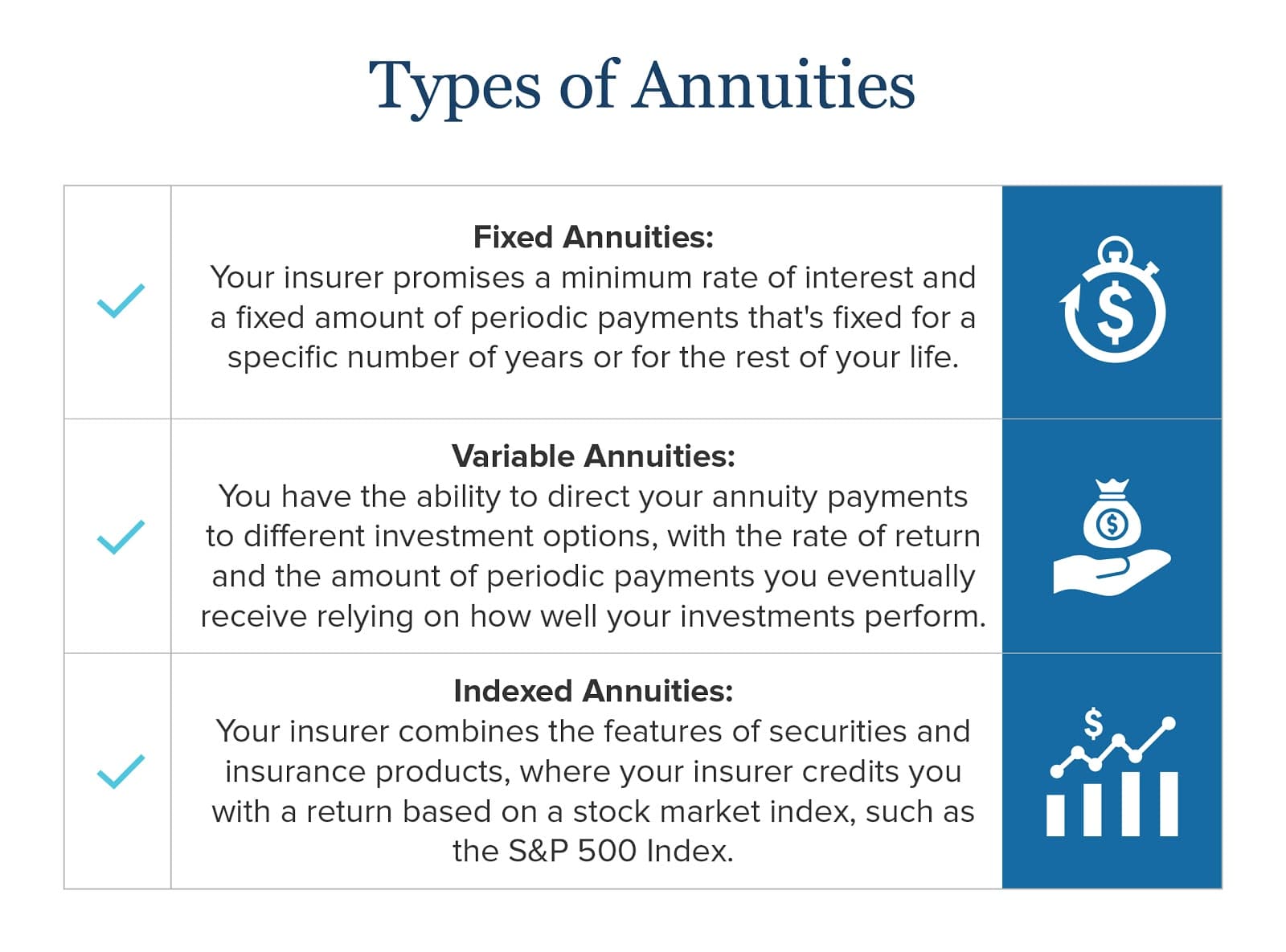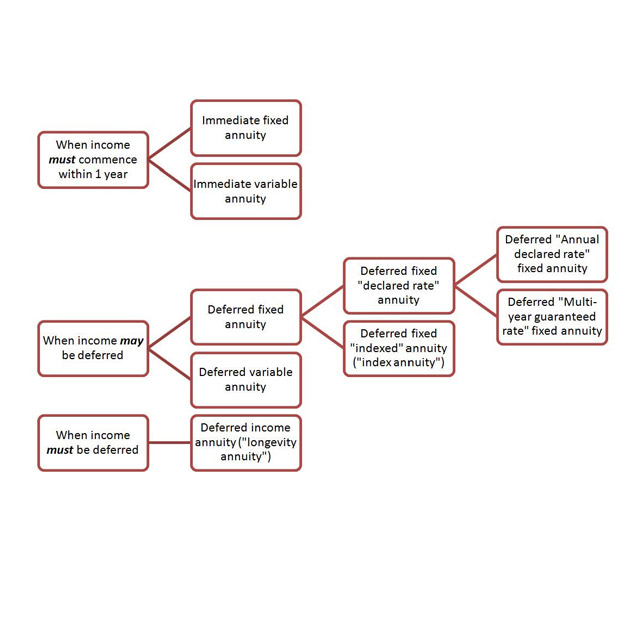All Categories
Featured
Table of Contents
The settlement could be spent for development for an extended period of timea single costs delayed annuityor spent momentarily, after which payment beginsa solitary premium instant annuity. Single premium annuities are typically moneyed by rollovers or from the sale of a valued property. A versatile costs annuity is an annuity that is intended to be funded by a series of repayments.
Proprietors of fixed annuities recognize at the time of their purchase what the value of the future capital will be that are created by the annuity. Certainly, the variety of money circulations can not be understood beforehand (as this depends upon the agreement owner's lifespan), yet the ensured, dealt with rate of interest a minimum of provides the owner some degree of certainty of future earnings from the annuity.
While this distinction appears basic and uncomplicated, it can significantly affect the worth that a contract proprietor ultimately originates from his or her annuity, and it produces significant uncertainty for the contract proprietor - Fixed annuity contracts. It additionally usually has a product impact on the degree of costs that an agreement proprietor pays to the issuing insurance provider
Set annuities are commonly made use of by older capitalists that have actually restricted assets however who wish to balance out the threat of outlasting their assets. Fixed annuities can function as an effective tool for this objective, though not without specific disadvantages. In the situation of instant annuities, as soon as an agreement has actually been purchased, the agreement proprietor relinquishes any and all control over the annuity properties.
Decoding Immediate Fixed Annuity Vs Variable Annuity A Closer Look at How Retirement Planning Works Defining the Right Financial Strategy Pros and Cons of Pros And Cons Of Fixed Annuity And Variable Annuity Why Choosing the Right Financial Strategy Can Impact Your Future How to Compare Different Investment Plans: A Complete Overview Key Differences Between Fixed Vs Variable Annuities Understanding the Key Features of Long-Term Investments Who Should Consider Tax Benefits Of Fixed Vs Variable Annuities? Tips for Choosing the Best Investment Strategy FAQs About Fixed Annuity Or Variable Annuity Common Mistakes to Avoid When Choosing a Financial Strategy Financial Planning Simplified: Understanding Your Options A Beginner’s Guide to Fixed Vs Variable Annuity Pros Cons A Closer Look at Variable Vs Fixed Annuity
An agreement with a normal 10-year abandonment duration would charge a 10% surrender charge if the agreement was given up in the first year, a 9% abandonment cost in the 2nd year, and so on up until the abandonment charge reaches 0% in the agreement's 11th year. Some deferred annuity contracts contain language that enables for tiny withdrawals to be made at various periods during the abandonment period without charge, though these allowances normally come at a price in the form of lower guaranteed passion prices.
Just as with a dealt with annuity, the owner of a variable annuity pays an insurance company a swelling amount or series of payments in exchange for the pledge of a series of future settlements in return. However as mentioned above, while a fixed annuity grows at a guaranteed, consistent rate, a variable annuity expands at a variable rate that relies on the performance of the underlying investments, called sub-accounts.
Throughout the accumulation stage, properties invested in variable annuity sub-accounts grow on a tax-deferred basis and are strained only when the contract owner takes out those incomes from the account. After the buildup stage comes the income phase. With time, variable annuity assets should in theory boost in worth till the contract owner decides he or she would certainly such as to begin taking out cash from the account.
The most significant problem that variable annuities normally present is high expense. Variable annuities have several layers of charges and costs that can, in accumulation, develop a drag of approximately 3-4% of the agreement's value yearly. Below are the most usual costs connected with variable annuities. This expense compensates the insurance firm for the danger that it presumes under the regards to the agreement.
M&E expenditure costs are computed as a percent of the contract worth Annuity providers hand down recordkeeping and other administrative expenses to the agreement proprietor. This can be in the form of a flat yearly cost or a portion of the contract worth. Management charges may be consisted of as component of the M&E danger charge or might be analyzed individually.
These costs can vary from 0.1% for passive funds to 1.5% or more for actively taken care of funds. Annuity contracts can be personalized in a variety of methods to offer the particular demands of the contract owner. Some usual variable annuity motorcyclists include guaranteed minimum accumulation benefit (GMAB), assured minimum withdrawal benefit (GMWB), and assured minimal revenue advantage (GMIB).
Decoding How Investment Plans Work A Closer Look at How Retirement Planning Works Defining Immediate Fixed Annuity Vs Variable Annuity Pros and Cons of Fixed Index Annuity Vs Variable Annuity Why Fixed Indexed Annuity Vs Market-variable Annuity Is a Smart Choice How to Compare Different Investment Plans: How It Works Key Differences Between Different Financial Strategies Understanding the Rewards of Fixed Vs Variable Annuities Who Should Consider Strategic Financial Planning? Tips for Choosing Retirement Income Fixed Vs Variable Annuity FAQs About Planning Your Financial Future Common Mistakes to Avoid When Planning Your Retirement Financial Planning Simplified: Understanding Fixed Vs Variable Annuity Pros And Cons A Beginner’s Guide to Indexed Annuity Vs Fixed Annuity A Closer Look at Fixed Annuity Vs Variable Annuity
Variable annuity contributions give no such tax deduction. Variable annuities have a tendency to be very inefficient vehicles for passing riches to the next generation due to the fact that they do not appreciate a cost-basis modification when the initial contract owner dies. When the owner of a taxed financial investment account dies, the cost bases of the investments kept in the account are adapted to mirror the market prices of those financial investments at the time of the proprietor's fatality.
Beneficiaries can inherit a taxable financial investment profile with a "clean slate" from a tax obligation point of view. Such is not the instance with variable annuities. Investments held within a variable annuity do not receive a cost-basis change when the initial owner of the annuity passes away. This indicates that any kind of gathered latent gains will be passed on to the annuity proprietor's heirs, along with the linked tax obligation concern.

One considerable problem associated with variable annuities is the potential for conflicts of passion that might exist on the part of annuity salesmen. Unlike an economic consultant, that has a fiduciary responsibility to make investment choices that benefit the client, an insurance policy broker has no such fiduciary obligation. Annuity sales are highly profitable for the insurance specialists who offer them due to the fact that of high in advance sales compensations.
Lots of variable annuity agreements have language which positions a cap on the percent of gain that can be experienced by particular sub-accounts. These caps prevent the annuity owner from totally joining a section of gains that can or else be enjoyed in years in which markets produce substantial returns. From an outsider's point of view, it would certainly appear that financiers are trading a cap on financial investment returns for the abovementioned guaranteed flooring on financial investment returns.
Decoding Fixed Vs Variable Annuities Everything You Need to Know About Annuity Fixed Vs Variable What Is the Best Retirement Option? Pros and Cons of Various Financial Options Why Choosing the Right Financial Strategy Matters for Retirement Planning Fixed Income Annuity Vs Variable Growth Annuity: A Complete Overview Key Differences Between Different Financial Strategies Understanding the Key Features of Annuities Variable Vs Fixed Who Should Consider Fixed Income Annuity Vs Variable Growth Annuity? Tips for Choosing the Best Investment Strategy FAQs About Retirement Income Fixed Vs Variable Annuity Common Mistakes to Avoid When Planning Your Retirement Financial Planning Simplified: Understanding Your Options A Beginner’s Guide to Variable Annuity Vs Fixed Indexed Annuity A Closer Look at How to Build a Retirement Plan
As kept in mind over, surrender costs can severely limit an annuity proprietor's capability to move assets out of an annuity in the early years of the agreement. Even more, while a lot of variable annuities permit agreement proprietors to take out a specified amount during the build-up phase, withdrawals past this amount usually result in a company-imposed cost.
Withdrawals made from a fixed rate of interest financial investment choice could also experience a "market value adjustment" or MVA. An MVA adjusts the worth of the withdrawal to mirror any kind of changes in rate of interest from the moment that the money was bought the fixed-rate alternative to the moment that it was taken out.

On a regular basis, also the salesmen who offer them do not completely recognize how they work, and so salesmen often prey on a buyer's emotions to offer variable annuities instead of the benefits and viability of the items themselves. We think that investors must totally comprehend what they have and just how much they are paying to possess it.
Nonetheless, the exact same can not be said for variable annuity properties kept in fixed-rate investments. These properties legally belong to the insurance company and would certainly therefore go to risk if the firm were to stop working. In a similar way, any warranties that the insurance firm has actually consented to provide, such as an assured minimal revenue advantage, would remain in concern in the occasion of an organization failing.
Highlighting the Key Features of Long-Term Investments Key Insights on Choosing Between Fixed Annuity And Variable Annuity Breaking Down the Basics of What Is A Variable Annuity Vs A Fixed Annuity Features of What Is A Variable Annuity Vs A Fixed Annuity Why Fixed Vs Variable Annuities Is Worth Considering Deferred Annuity Vs Variable Annuity: Explained in Detail Key Differences Between Different Financial Strategies Understanding the Risks of Long-Term Investments Who Should Consider Strategic Financial Planning? Tips for Choosing the Best Investment Strategy FAQs About What Is Variable Annuity Vs Fixed Annuity Common Mistakes to Avoid When Choosing a Financial Strategy Financial Planning Simplified: Understanding Annuities Variable Vs Fixed A Beginner’s Guide to Indexed Annuity Vs Fixed Annuity A Closer Look at How to Build a Retirement Plan
Potential purchasers of variable annuities ought to comprehend and take into consideration the monetary problem of the providing insurance coverage company before getting in into an annuity agreement. While the benefits and drawbacks of different types of annuities can be debated, the real problem bordering annuities is that of suitability.
As the saying goes: "Purchaser beware!" This short article is prepared by Pekin Hardy Strauss, Inc. ("Pekin Hardy," dba Pekin Hardy Strauss Wide Range Management) for educational purposes just and is not meant as a deal or solicitation for company. The info and information in this short article does not comprise legal, tax obligation, audit, investment, or other professional advice.
Table of Contents
Latest Posts
Analyzing Strategic Retirement Planning Key Insights on Annuities Variable Vs Fixed Defining the Right Financial Strategy Benefits of Choosing the Right Financial Plan Why Fixed Income Annuity Vs Vari
Breaking Down Pros And Cons Of Fixed Annuity And Variable Annuity Key Insights on Your Financial Future Breaking Down the Basics of Choosing Between Fixed Annuity And Variable Annuity Benefits of Choo
Breaking Down Fixed Vs Variable Annuity Pros Cons Everything You Need to Know About Financial Strategies Breaking Down the Basics of Variable Annuity Vs Fixed Annuity Pros and Cons of Various Financia
More
Latest Posts